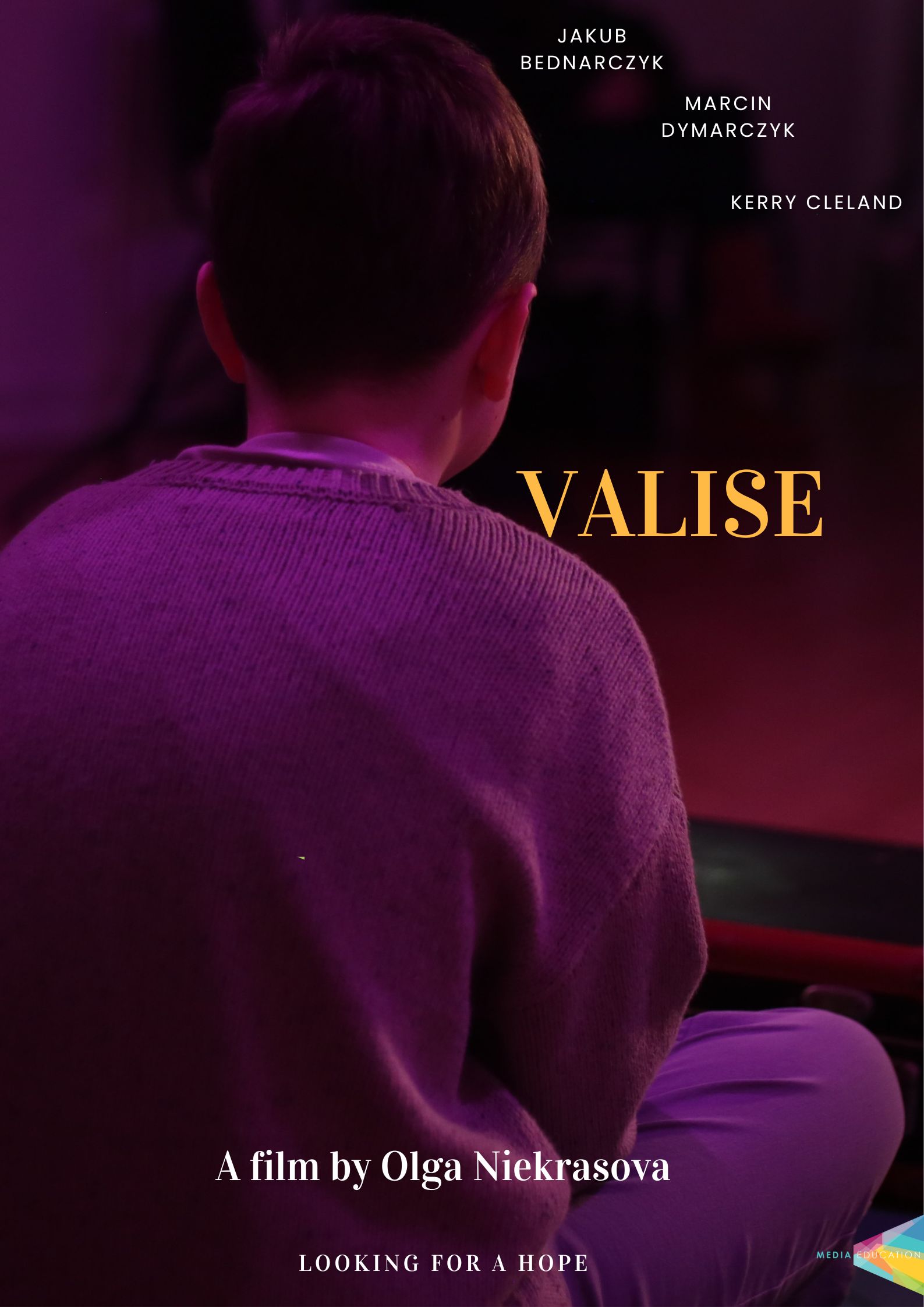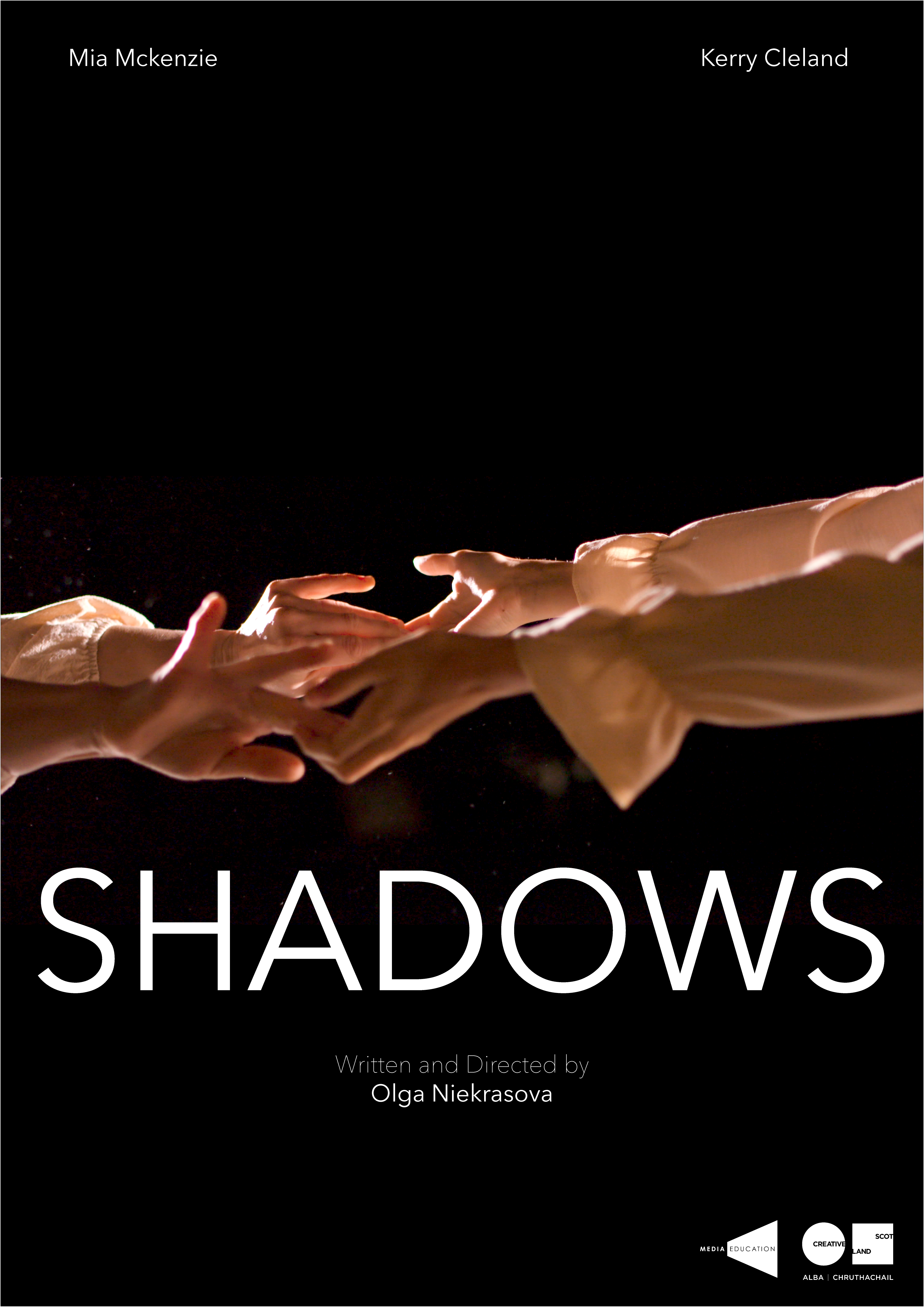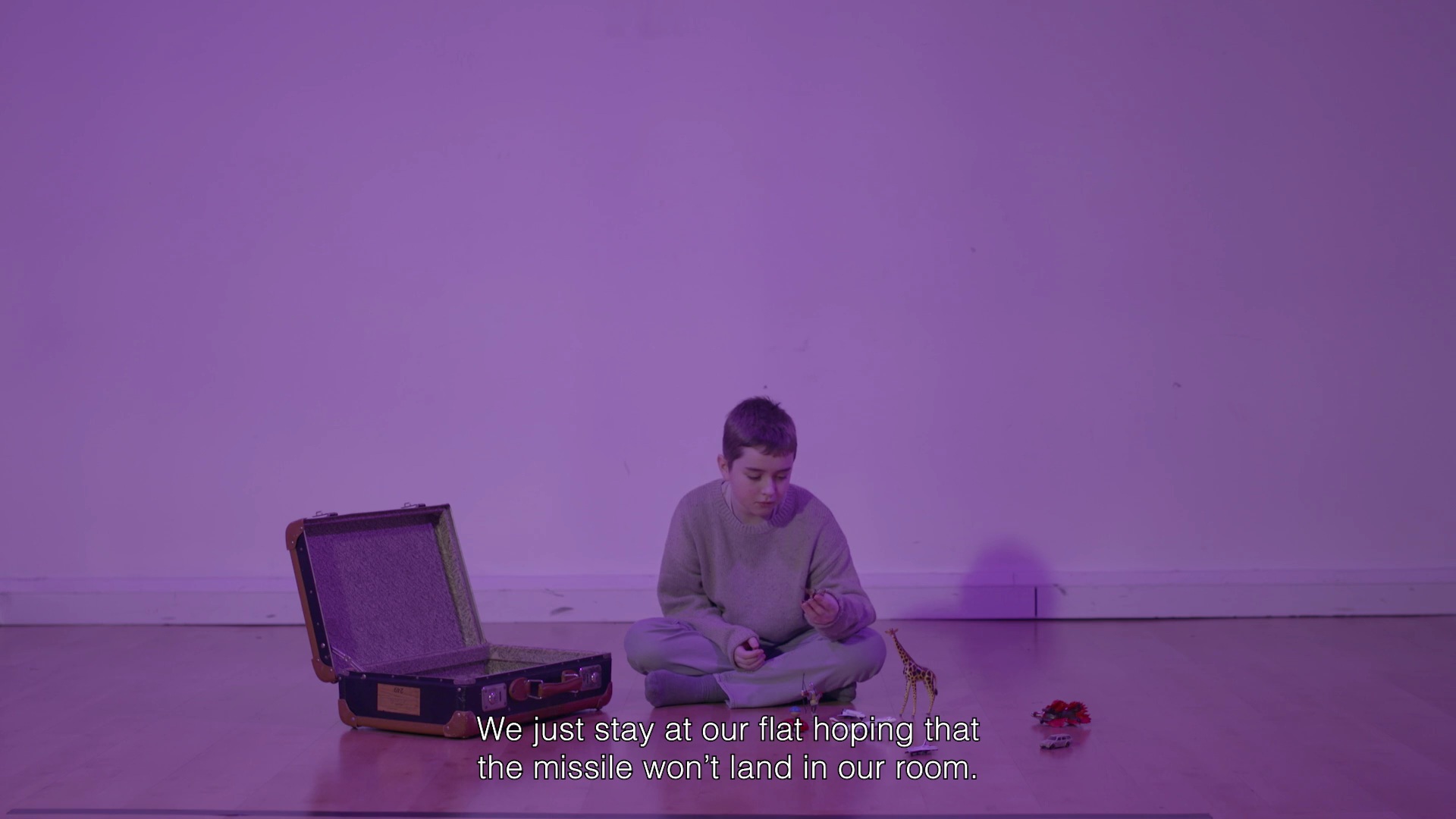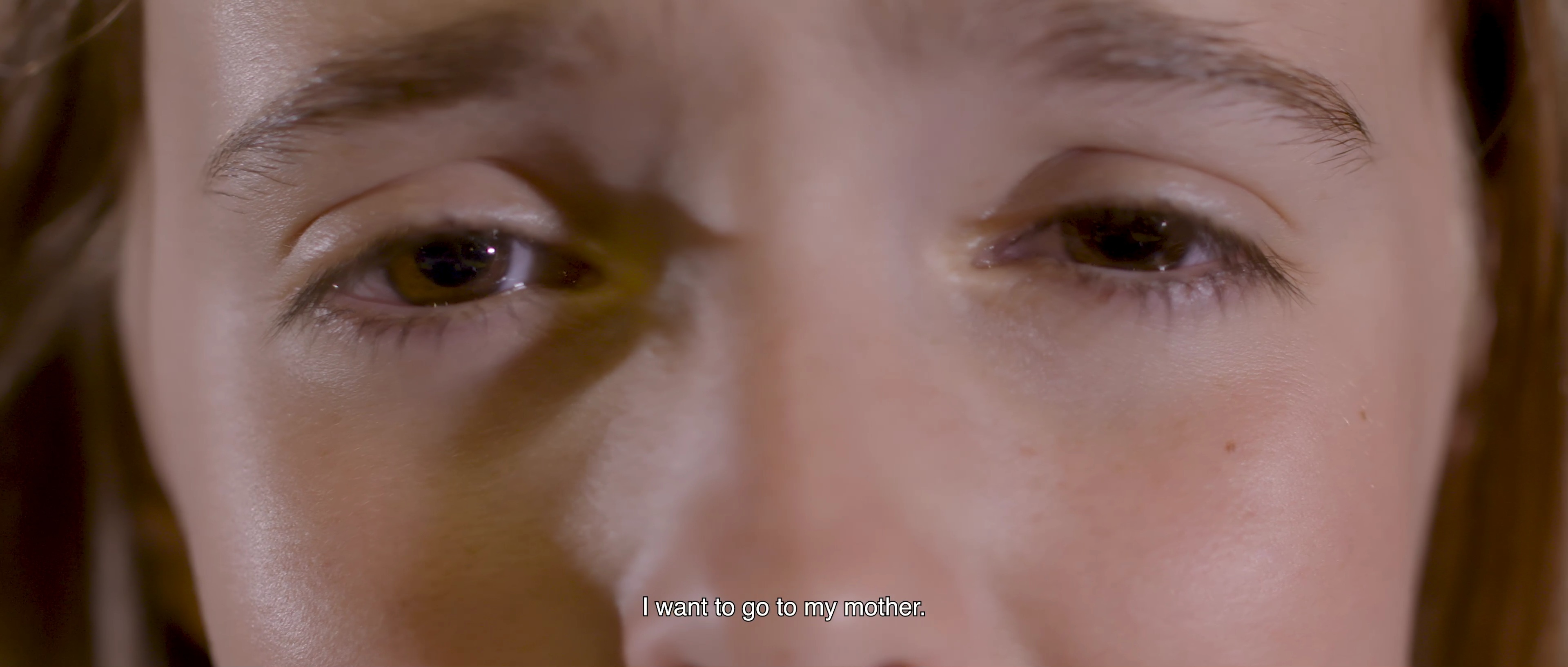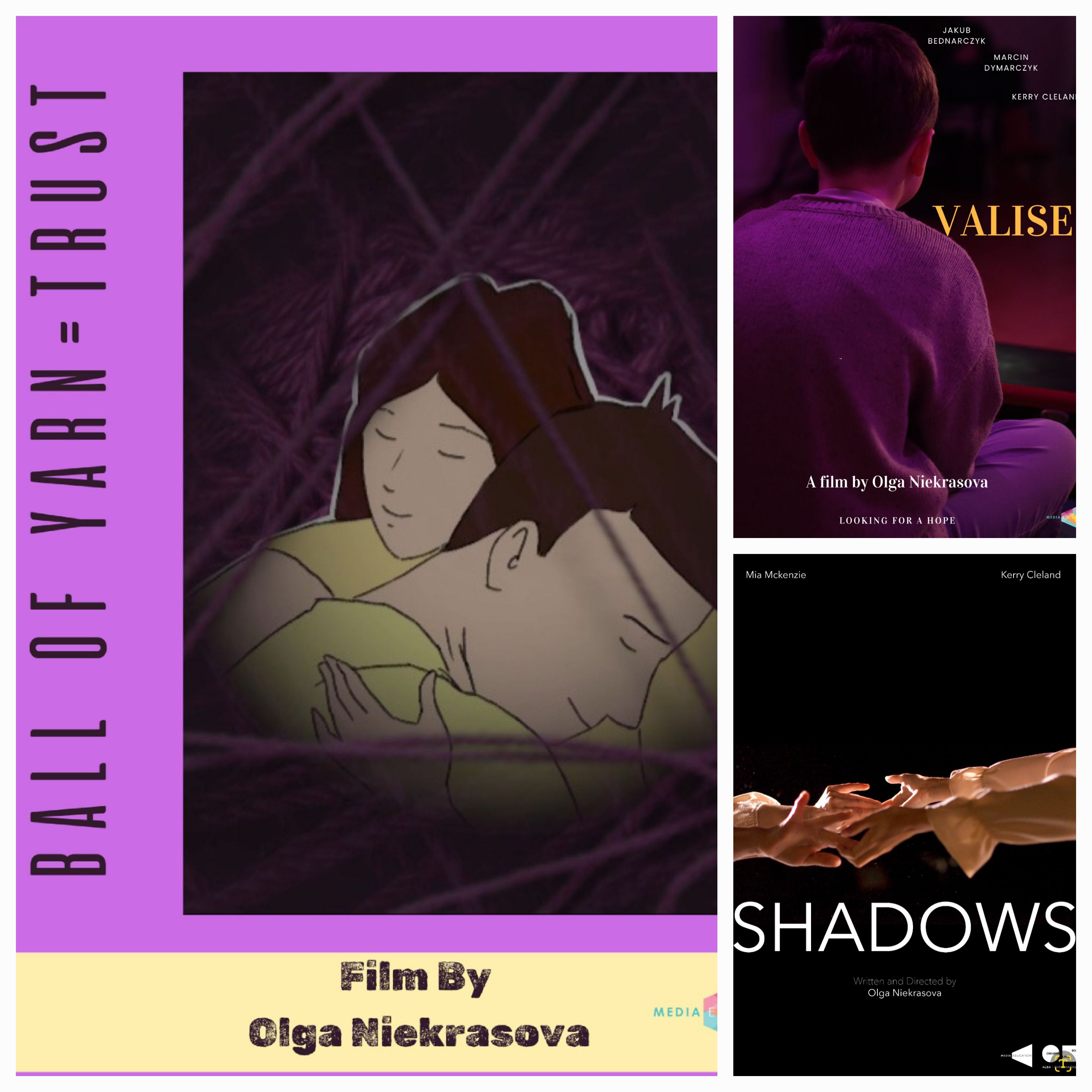Regaining a sense of belonging
Valise, Shadows
Valise, Shadows
The experimental short film "SHADOWS" tells the dramatic story of a mother and her 10-year-old daughter being forcibly separated, and is devoted to the deportation of Ukrainian children by the Russians.
The experimental short film "VALISE" centers on a 7-year-old boy who hides from a missile attack and tries to recall memories by packing them in his suitcase in case he needs to flee his home and become a refugee. The film is a tribute to Ukrainian kids enduring missile strikes every day.
The experimental short film "VALISE" centers on a 7-year-old boy who hides from a missile attack and tries to recall memories by packing them in his suitcase in case he needs to flee his home and become a refugee. The film is a tribute to Ukrainian kids enduring missile strikes every day.
Ukraine
National
It addresses urban-rural linkages
It refers to a physical transformation of the built environment (hard investment)
Yes
2023-06-20
No
No
No
As an individual
The motivation behind SHADOWS and VALISE comes from the urgent need to highlight the suffering of Ukrainian children affected by war. These films are not just stories but reflections of real trauma, loss, and resilience, serving as artistic testimonies and calls for awareness.
SHADOWS (2023)
This experimental short film exposes the horror of forced deportations, telling the story of a mother and her 10-year-old daughter being torn apart. Thousands of Ukrainian children have been taken from their families, their identities erased, their futures stolen. Through haunting visuals, SHADOWS captures the pain of separation and the silent cries of those who may never return home. The film stands as both a remembrance and a plea for justice.
VALISE (2023)
Inspired by the daily missile attacks that have terrorized Ukraine’s children since February 2022, VALISE tells the story of a 7-year-old boy hiding from bombardment. Clutching a suitcase, he tries to pack his memories—things he may never see again if forced to flee. This symbolic act represents the heartbreaking reality of displacement, where childhood itself becomes a casualty of war.
A Cinematic Protest
Both films use experimental storytelling to immerse the audience in the emotional and psychological toll of war. They are not just films but artistic protests against the suffering inflicted on innocent children. By amplifying their voices, SHADOWS and VALISE ensure that their pain is neither ignored nor forgotten.
Cinema has the power to bear witness and inspire change. These films are dedicated to Ukraine’s youngest victims and to a future where no child must pack their memories in fear of losing everything.
SHADOWS (2023)
This experimental short film exposes the horror of forced deportations, telling the story of a mother and her 10-year-old daughter being torn apart. Thousands of Ukrainian children have been taken from their families, their identities erased, their futures stolen. Through haunting visuals, SHADOWS captures the pain of separation and the silent cries of those who may never return home. The film stands as both a remembrance and a plea for justice.
VALISE (2023)
Inspired by the daily missile attacks that have terrorized Ukraine’s children since February 2022, VALISE tells the story of a 7-year-old boy hiding from bombardment. Clutching a suitcase, he tries to pack his memories—things he may never see again if forced to flee. This symbolic act represents the heartbreaking reality of displacement, where childhood itself becomes a casualty of war.
A Cinematic Protest
Both films use experimental storytelling to immerse the audience in the emotional and psychological toll of war. They are not just films but artistic protests against the suffering inflicted on innocent children. By amplifying their voices, SHADOWS and VALISE ensure that their pain is neither ignored nor forgotten.
Cinema has the power to bear witness and inspire change. These films are dedicated to Ukraine’s youngest victims and to a future where no child must pack their memories in fear of losing everything.
forced separation
missile strikes
social justice
destruction
psychological traumas
The key objectives of SHADOWS and VALISE in terms of sustainability focus on preserving cultural memory, raising awareness about humanitarian crises, and using art as a tool for social change. These films contribute to sustainable storytelling by ensuring that the voices of war-affected children are heard, fostering long-term global awareness, and inspiring action.
Sustainability Through Cultural and Social Impact
Both films address the ongoing suffering of Ukrainian children, preserving their stories as part of a collective historical record. By documenting these realities through cinema, the project ensures that these tragedies are not forgotten, sustaining public discourse and advocacy for displaced and deported children.
Innovative and Responsible Production
The films were created with minimal environmental impact, using digital technology, small-scale production teams, and sustainable filming practices. The focus on experimental storytelling allowed for resource-efficient production while maintaining emotional and artistic depth.
Exemplary in Awareness and Advocacy
SHADOWS and VALISE serve as models of how cinema can drive social responsibility. By addressing forced deportation and displacement, they raise awareness and encourage dialogue, making them powerful tools for education, activism, and policy influence. Their ability to connect with international audiences ensures long-term sustainability in their impact.
By preserving historical narratives, minimizing environmental impact, and inspiring social action, these films exemplify sustainability in the cultural sector, demonstrating how art can create lasting change in times of crisis.
Sustainability Through Cultural and Social Impact
Both films address the ongoing suffering of Ukrainian children, preserving their stories as part of a collective historical record. By documenting these realities through cinema, the project ensures that these tragedies are not forgotten, sustaining public discourse and advocacy for displaced and deported children.
Innovative and Responsible Production
The films were created with minimal environmental impact, using digital technology, small-scale production teams, and sustainable filming practices. The focus on experimental storytelling allowed for resource-efficient production while maintaining emotional and artistic depth.
Exemplary in Awareness and Advocacy
SHADOWS and VALISE serve as models of how cinema can drive social responsibility. By addressing forced deportation and displacement, they raise awareness and encourage dialogue, making them powerful tools for education, activism, and policy influence. Their ability to connect with international audiences ensures long-term sustainability in their impact.
By preserving historical narratives, minimizing environmental impact, and inspiring social action, these films exemplify sustainability in the cultural sector, demonstrating how art can create lasting change in times of crisis.
The key objectives of SHADOWS and VALISE in terms of aesthetics and quality of experience focus on immersive storytelling, emotional depth, and cultural significance. Through innovative design and experimental cinematic techniques, these films create a powerful and thought-provoking experience that resonates with audiences on a deep emotional level.
Aesthetic Approach and Cinematic Innovation
Both films embrace an experimental visual style that enhances their emotional impact. SHADOWS uses haunting imagery, stark contrasts, and fragmented storytelling to evoke the devastating trauma of forced separation. VALISE employs symbolic composition, intimate framing, and a delicate interplay of light and shadow to capture the fragile world of a child navigating war. These artistic choices heighten the audience’s sensory and emotional engagement, making the films more than just narratives—they become experiences.
Cultural and Emotional Depth
The films serve as a bridge between individual stories and collective memory, preserving the voices of Ukrainian children affected by war. By drawing on cultural symbolism—such as the suitcase in VALISE, representing loss and displacement—these works create a universal yet deeply personal connection. Their design ensures that viewers not only witness but feel the weight of these experiences.
Exemplary in Artistic and Human Impact
By combining striking visual language with profound storytelling, SHADOWS and VALISE exemplify how film can be both a cultural artifact and a catalyst for awareness. Their aesthetic and narrative choices push the boundaries of conventional storytelling, setting a standard for socially impactful cinema.
These films demonstrate that artistic excellence and cultural significance can go hand in hand, offering audiences an unforgettable experience while fostering empathy, dialogue, and reflection on the realities of war.
Aesthetic Approach and Cinematic Innovation
Both films embrace an experimental visual style that enhances their emotional impact. SHADOWS uses haunting imagery, stark contrasts, and fragmented storytelling to evoke the devastating trauma of forced separation. VALISE employs symbolic composition, intimate framing, and a delicate interplay of light and shadow to capture the fragile world of a child navigating war. These artistic choices heighten the audience’s sensory and emotional engagement, making the films more than just narratives—they become experiences.
Cultural and Emotional Depth
The films serve as a bridge between individual stories and collective memory, preserving the voices of Ukrainian children affected by war. By drawing on cultural symbolism—such as the suitcase in VALISE, representing loss and displacement—these works create a universal yet deeply personal connection. Their design ensures that viewers not only witness but feel the weight of these experiences.
Exemplary in Artistic and Human Impact
By combining striking visual language with profound storytelling, SHADOWS and VALISE exemplify how film can be both a cultural artifact and a catalyst for awareness. Their aesthetic and narrative choices push the boundaries of conventional storytelling, setting a standard for socially impactful cinema.
These films demonstrate that artistic excellence and cultural significance can go hand in hand, offering audiences an unforgettable experience while fostering empathy, dialogue, and reflection on the realities of war.
The key objectives of SHADOWS and VALISE in terms of inclusion focus on accessibility, representation, and the power of storytelling to amplify marginalized voices. These films ensure that the experiences of Ukrainian children affected by war are recognized and understood globally, fostering empathy and dialogue across diverse audiences.
Accessibility and Affordability
Both films have been made available through digital platforms, film festivals, and public screenings, ensuring broad access regardless of geographical or financial barriers. By using experimental yet universally emotional storytelling, the films transcend language barriers, making them accessible to a wide range of audiences. Subtitles and alternative formats enhance inclusivity for international and hearing-impaired viewers.
Representation and Cultural Inclusion
By centering on children—one of the most vulnerable groups in conflict—SHADOWS and VALISE provide a voice to those often unheard. These films preserve and share Ukrainian cultural identity, ensuring that these stories are included in the global conversation about war, displacement, and human rights.
Exemplary in Social Awareness and Inclusion
These projects challenge exclusion by making the trauma of war personal and relatable to all. They encourage reflection on societal responsibilities, fostering solidarity and action. The films exemplify how cinema can serve as a democratic, inclusive tool for social change, giving a voice to those most affected by conflict while ensuring accessibility for a wide audience.
Accessibility and Affordability
Both films have been made available through digital platforms, film festivals, and public screenings, ensuring broad access regardless of geographical or financial barriers. By using experimental yet universally emotional storytelling, the films transcend language barriers, making them accessible to a wide range of audiences. Subtitles and alternative formats enhance inclusivity for international and hearing-impaired viewers.
Representation and Cultural Inclusion
By centering on children—one of the most vulnerable groups in conflict—SHADOWS and VALISE provide a voice to those often unheard. These films preserve and share Ukrainian cultural identity, ensuring that these stories are included in the global conversation about war, displacement, and human rights.
Exemplary in Social Awareness and Inclusion
These projects challenge exclusion by making the trauma of war personal and relatable to all. They encourage reflection on societal responsibilities, fostering solidarity and action. The films exemplify how cinema can serve as a democratic, inclusive tool for social change, giving a voice to those most affected by conflict while ensuring accessibility for a wide audience.
The creation of SHADOWS and VALISE has been deeply rooted in the experiences of those directly affected by war, with the involvement of Ukrainian citizens, displaced families, and civil society playing a crucial role in shaping the films' narratives and impact.
Involvement of Those Affected
Both films draw from real accounts of Ukrainian children and families who have suffered due to forced deportation and missile attacks. Survivors’ testimonies, as well as insights from humanitarian organizations, have informed the storytelling, ensuring authenticity and emotional depth. This collaboration has helped translate real-life pain into a cinematic experience that remains truthful and impactful.
Community and Civil Society Engagement
Ukrainian artists, filmmakers, and activists have been involved in various stages of production, from script development to visual storytelling. NGOs supporting war-affected children have provided crucial context and visibility for the project, helping to amplify its message. Screenings and discussions involving refugees, advocacy groups, and educators have further extended the films' reach, fostering dialogue and awareness.
Impact of Their Involvement
The participation of affected individuals and civil society has strengthened the emotional and cultural authenticity of the films. Their voices have shaped the project’s direction, ensuring that it reflects the real experiences of those suffering from war. This involvement has also helped create a space for healing, remembrance, and advocacy, turning the films into not just artistic works but tools for social change.
By actively engaging with those impacted, SHADOWS and VALISE have become more than just films—they are collective expressions of resilience, memory, and the urgent need for justice.
Involvement of Those Affected
Both films draw from real accounts of Ukrainian children and families who have suffered due to forced deportation and missile attacks. Survivors’ testimonies, as well as insights from humanitarian organizations, have informed the storytelling, ensuring authenticity and emotional depth. This collaboration has helped translate real-life pain into a cinematic experience that remains truthful and impactful.
Community and Civil Society Engagement
Ukrainian artists, filmmakers, and activists have been involved in various stages of production, from script development to visual storytelling. NGOs supporting war-affected children have provided crucial context and visibility for the project, helping to amplify its message. Screenings and discussions involving refugees, advocacy groups, and educators have further extended the films' reach, fostering dialogue and awareness.
Impact of Their Involvement
The participation of affected individuals and civil society has strengthened the emotional and cultural authenticity of the films. Their voices have shaped the project’s direction, ensuring that it reflects the real experiences of those suffering from war. This involvement has also helped create a space for healing, remembrance, and advocacy, turning the films into not just artistic works but tools for social change.
By actively engaging with those impacted, SHADOWS and VALISE have become more than just films—they are collective expressions of resilience, memory, and the urgent need for justice.
The development and impact of SHADOWS and VALISE have been strengthened by the engagement of diverse stakeholders at local, national, and European levels, each contributing to the films' authenticity, reach, and social significance.
Local Engagement
At the grassroots level, Ukrainian families, displaced individuals, and humanitarian organizations provided firsthand accounts that shaped the films’ narratives. Their insights ensured that the storytelling remained deeply authentic and reflective of the lived experiences of war-affected children. Local filmmakers, artists, and cultural institutions also contributed to the creative process, offering perspectives that grounded the films in Ukraine’s cultural identity.
National and Regional Involvement
Ukrainian NGOs, advocacy groups, and educational institutions played a key role in promoting the films and facilitating discussions on forced deportations and the psychological impact of war on children. National media outlets helped amplify the message, ensuring broader public awareness. The involvement of film organizations and cultural foundations enabled production support and distribution within Ukraine and neighboring regions.
European and International Collaboration
At the European level, film festivals, human rights organizations, and cultural networks have helped bring SHADOWS and VALISE to international audiences. Partnerships with advocacy groups working on war crimes documentation and refugee rights have further increased the films' visibility, turning them into tools for awareness and policy discussions.
Added Value of Multi-Level Engagement
This multi-tiered collaboration has not only enriched the films creatively but has also expanded their reach and impact. By engaging stakeholders across different levels, SHADOWS and VALISE have become more than cinematic works—they serve as cultural testimonies, advocacy tools, and catalysts for conversation on a global scale.
Local Engagement
At the grassroots level, Ukrainian families, displaced individuals, and humanitarian organizations provided firsthand accounts that shaped the films’ narratives. Their insights ensured that the storytelling remained deeply authentic and reflective of the lived experiences of war-affected children. Local filmmakers, artists, and cultural institutions also contributed to the creative process, offering perspectives that grounded the films in Ukraine’s cultural identity.
National and Regional Involvement
Ukrainian NGOs, advocacy groups, and educational institutions played a key role in promoting the films and facilitating discussions on forced deportations and the psychological impact of war on children. National media outlets helped amplify the message, ensuring broader public awareness. The involvement of film organizations and cultural foundations enabled production support and distribution within Ukraine and neighboring regions.
European and International Collaboration
At the European level, film festivals, human rights organizations, and cultural networks have helped bring SHADOWS and VALISE to international audiences. Partnerships with advocacy groups working on war crimes documentation and refugee rights have further increased the films' visibility, turning them into tools for awareness and policy discussions.
Added Value of Multi-Level Engagement
This multi-tiered collaboration has not only enriched the films creatively but has also expanded their reach and impact. By engaging stakeholders across different levels, SHADOWS and VALISE have become more than cinematic works—they serve as cultural testimonies, advocacy tools, and catalysts for conversation on a global scale.
The design and implementation of SHADOWS and VALISE integrated multiple disciplines and knowledge fields, creating a multidimensional approach that enhanced both artistic expression and social impact.
Disciplines and Knowledge Fields Involved
Film and Visual Arts – Experimental filmmaking techniques were used to create immersive storytelling, employing cinematography, lighting, and editing to evoke deep emotional responses.
History and Human Rights – The films are grounded in historical research and testimonies, reflecting the reality of forced deportations and displacement within the broader context of war crimes and human rights violations.
Psychology and Trauma Studies – Experts in trauma-informed storytelling provided insights into the psychological impact of war on children, ensuring that the films accurately represented the emotional and cognitive effects of displacement and loss.
Sociology and Refugee Studies – The films address themes of forced migration, cultural identity, and resilience, drawing from academic research on war-affected communities.
Education and Advocacy – Collaborations with NGOs, educators, and activists helped shape the films into tools for awareness, advocacy, and discussion in social and political spheres.
Interdisciplinary Collaboration
These different fields interacted through continuous dialogue between filmmakers, researchers, human rights experts, and trauma specialists. Historians and human rights organizations provided factual grounding, while psychologists helped shape character portrayals with sensitivity. Filmmakers translated these insights into powerful visual narratives, ensuring both artistic integrity and social relevance.
Added Value of this Process
This interdisciplinary approach enriched the films' depth, making them not only visually compelling but also socially meaningful.
Disciplines and Knowledge Fields Involved
Film and Visual Arts – Experimental filmmaking techniques were used to create immersive storytelling, employing cinematography, lighting, and editing to evoke deep emotional responses.
History and Human Rights – The films are grounded in historical research and testimonies, reflecting the reality of forced deportations and displacement within the broader context of war crimes and human rights violations.
Psychology and Trauma Studies – Experts in trauma-informed storytelling provided insights into the psychological impact of war on children, ensuring that the films accurately represented the emotional and cognitive effects of displacement and loss.
Sociology and Refugee Studies – The films address themes of forced migration, cultural identity, and resilience, drawing from academic research on war-affected communities.
Education and Advocacy – Collaborations with NGOs, educators, and activists helped shape the films into tools for awareness, advocacy, and discussion in social and political spheres.
Interdisciplinary Collaboration
These different fields interacted through continuous dialogue between filmmakers, researchers, human rights experts, and trauma specialists. Historians and human rights organizations provided factual grounding, while psychologists helped shape character portrayals with sensitivity. Filmmakers translated these insights into powerful visual narratives, ensuring both artistic integrity and social relevance.
Added Value of this Process
This interdisciplinary approach enriched the films' depth, making them not only visually compelling but also socially meaningful.
The innovative character of SHADOWS and VALISE lies in their experimental approach to storytelling, their fusion of art and activism, and their ability to turn deeply personal narratives into universal calls for awareness and change. Unlike mainstream war-related films that often rely on conventional documentary or dramatic storytelling, these projects use avant-garde cinematic techniques to immerse audiences in the psychological and emotional realities of children affected by war.
Experimental Storytelling
Both films break away from linear narratives, instead using fragmented imagery, symbolic metaphors, and immersive soundscapes to evoke memory, loss, and trauma. SHADOWS employs abstract and surrealist techniques to represent forced separation, while VALISE uses a child’s perspective and poetic visuals to illustrate the fragility of memory in times of crisis.
Fusion of Art and Advocacy
These films are not just artistic expressions but also powerful tools for human rights advocacy. By collaborating with historians, psychologists, and NGOs, they transcend traditional filmmaking to become instruments of education and social impact. Their screenings go beyond entertainment, serving as catalysts for discussions on war crimes, displacement, and trauma recovery.
A Universal and Accessible Experience
Rather than relying on dialogue-heavy narratives, the films use visual and sensory storytelling that speaks to audiences regardless of language or background. This approach ensures accessibility and emotional resonance across cultures, making them effective tools for global awareness.
Exemplary Innovation
By blending experimental aesthetics with real-world advocacy, SHADOWS and VALISE push the boundaries of traditional war cinema. They redefine how film can document crisis, engage audiences, and inspire action, setting a new standard for socially conscious filmmaking.
Experimental Storytelling
Both films break away from linear narratives, instead using fragmented imagery, symbolic metaphors, and immersive soundscapes to evoke memory, loss, and trauma. SHADOWS employs abstract and surrealist techniques to represent forced separation, while VALISE uses a child’s perspective and poetic visuals to illustrate the fragility of memory in times of crisis.
Fusion of Art and Advocacy
These films are not just artistic expressions but also powerful tools for human rights advocacy. By collaborating with historians, psychologists, and NGOs, they transcend traditional filmmaking to become instruments of education and social impact. Their screenings go beyond entertainment, serving as catalysts for discussions on war crimes, displacement, and trauma recovery.
A Universal and Accessible Experience
Rather than relying on dialogue-heavy narratives, the films use visual and sensory storytelling that speaks to audiences regardless of language or background. This approach ensures accessibility and emotional resonance across cultures, making them effective tools for global awareness.
Exemplary Innovation
By blending experimental aesthetics with real-world advocacy, SHADOWS and VALISE push the boundaries of traditional war cinema. They redefine how film can document crisis, engage audiences, and inspire action, setting a new standard for socially conscious filmmaking.
The methodology used in SHADOWS and VALISE combines experimental filmmaking techniques with a deeply research-driven, interdisciplinary approach to storytelling. The films are designed to evoke emotional and psychological responses while staying true to the lived realities of Ukrainian children affected by war.
Interdisciplinary Research
The approach began with thorough research, including testimonies from displaced families, consultations with human rights organizations, and expert input from psychologists, trauma specialists, and historians. This ensured that the films' content was grounded in real experiences, while also accurately reflecting the psychological and emotional impact of war on children.
Experimental Cinematic Techniques
Both films adopted an experimental style, prioritizing abstract visuals and sensory storytelling over traditional narrative structures. Techniques such as fragmented imagery, symbolic metaphors, and minimalist soundscapes were used to evoke the trauma of displacement, loss, and forced separation. This approach aimed to create an immersive experience that allows the audience to feel the emotional weight of the subject matter, rather than simply observing it.
Collaboration and Community Engagement
Collaboration played a central role in the project. Filmmakers worked closely with Ukrainian artists, human rights advocates, and refugee support groups to ensure cultural authenticity and social relevance. The films were developed as collaborative works that not only reflect the voices of affected communities but also serve as platforms for education and advocacy.
Inclusive and Accessible Design
The methodology also focused on accessibility, ensuring that the films reached a wide range of audiences, including those with disabilities and non-native speakers. Subtitles, alternative formats, and global screenings were part of the strategy to broaden their impact and ensure that the messages of the films could resonate worldwide.
Interdisciplinary Research
The approach began with thorough research, including testimonies from displaced families, consultations with human rights organizations, and expert input from psychologists, trauma specialists, and historians. This ensured that the films' content was grounded in real experiences, while also accurately reflecting the psychological and emotional impact of war on children.
Experimental Cinematic Techniques
Both films adopted an experimental style, prioritizing abstract visuals and sensory storytelling over traditional narrative structures. Techniques such as fragmented imagery, symbolic metaphors, and minimalist soundscapes were used to evoke the trauma of displacement, loss, and forced separation. This approach aimed to create an immersive experience that allows the audience to feel the emotional weight of the subject matter, rather than simply observing it.
Collaboration and Community Engagement
Collaboration played a central role in the project. Filmmakers worked closely with Ukrainian artists, human rights advocates, and refugee support groups to ensure cultural authenticity and social relevance. The films were developed as collaborative works that not only reflect the voices of affected communities but also serve as platforms for education and advocacy.
Inclusive and Accessible Design
The methodology also focused on accessibility, ensuring that the films reached a wide range of audiences, including those with disabilities and non-native speakers. Subtitles, alternative formats, and global screenings were part of the strategy to broaden their impact and ensure that the messages of the films could resonate worldwide.
Several elements of SHADOWS and VALISE can be replicated or transferred to other contexts, groups of beneficiaries, and regions, making the project adaptable to a wide range of social, cultural, and humanitarian settings. Key aspects of the methodology, technology, and community involvement can serve as models for addressing trauma, displacement, and human rights issues in various environments.
Methodology
The interdisciplinary research-based approach used in both films can be applied to other contexts involving displaced populations or marginalized groups. By combining insights from psychology, history, and human rights with creative storytelling, the films ensure authenticity and emotional depth. This methodology can be adapted to reflect the experiences of other vulnerable communities globally.
Experimental Filmmaking Techniques
The experimental narrative style, emphasizing visual storytelling and symbolic metaphors, is highly adaptable to different cultural and social contexts. This approach communicates complex emotional and psychological experiences in a way that transcends language barriers, making it applicable for global advocacy, especially in regions dealing with conflict or displacement.
Technology and Accessibility
The digital distribution model, along with the use of subtitles, audio descriptions, and alternative formats, ensures accessibility for diverse audiences. This inclusive design can be replicated for other projects aiming to reach global, multilingual, and disability-inclusive audiences, especially when disseminating important messages in crisis situations.
Community Engagement and Collaboration
The participatory process used in SHADOWS and VALISE, which involved local artists, NGOs, and affected individuals, can be transferred to other projects focused on social issues.
Methodology
The interdisciplinary research-based approach used in both films can be applied to other contexts involving displaced populations or marginalized groups. By combining insights from psychology, history, and human rights with creative storytelling, the films ensure authenticity and emotional depth. This methodology can be adapted to reflect the experiences of other vulnerable communities globally.
Experimental Filmmaking Techniques
The experimental narrative style, emphasizing visual storytelling and symbolic metaphors, is highly adaptable to different cultural and social contexts. This approach communicates complex emotional and psychological experiences in a way that transcends language barriers, making it applicable for global advocacy, especially in regions dealing with conflict or displacement.
Technology and Accessibility
The digital distribution model, along with the use of subtitles, audio descriptions, and alternative formats, ensures accessibility for diverse audiences. This inclusive design can be replicated for other projects aiming to reach global, multilingual, and disability-inclusive audiences, especially when disseminating important messages in crisis situations.
Community Engagement and Collaboration
The participatory process used in SHADOWS and VALISE, which involved local artists, NGOs, and affected individuals, can be transferred to other projects focused on social issues.
SHADOWS and VALISE address global challenges such as forced migration, child displacement, and the psychological trauma of war, while offering local solutions based on the experiences of Ukrainian children affected by conflict. The films highlight universal issues while emphasizing the need for localized responses focused on human rights, mental health, and cultural preservation.
Global Challenge: Forced Migration and Displacement
The ongoing conflict in Ukraine has caused widespread forced migration, especially among children. SHADOWS portrays the separation of children from their families, focusing on the deportation of Ukrainian children. VALISE explores the emotional toll of displacement through a young boy who packs his memories into a suitcase, symbolizing the loss of home and security. These films raise awareness of child displacement and its long-lasting impact on identity.
Local Solutions: Cultural Representation and Advocacy
By drawing from the real-life experiences of Ukrainian children, the films offer a local perspective on global issues. The involvement of local artists, families, and NGOs ensures authenticity. The films advocate for children’s rights and raise awareness about the need for policies that prevent further displacement and support trauma recovery.
Global Challenge: Trauma and Psychological Impact of War
The psychological toll of war, especially on children, is a global issue requiring localized healing solutions. SHADOWS and VALISE address this trauma, highlighting the need for mental health support and trauma-informed care for displaced children.
Local Solutions: Raising Awareness and Inspiring Action
The films raise awareness about the need for local interventions that provide psychological support and safe spaces for displaced children. They encourage governments and organizations to implement trauma recovery programs and advocate for policies that protect children in conflict zones.
Global Challenge: Forced Migration and Displacement
The ongoing conflict in Ukraine has caused widespread forced migration, especially among children. SHADOWS portrays the separation of children from their families, focusing on the deportation of Ukrainian children. VALISE explores the emotional toll of displacement through a young boy who packs his memories into a suitcase, symbolizing the loss of home and security. These films raise awareness of child displacement and its long-lasting impact on identity.
Local Solutions: Cultural Representation and Advocacy
By drawing from the real-life experiences of Ukrainian children, the films offer a local perspective on global issues. The involvement of local artists, families, and NGOs ensures authenticity. The films advocate for children’s rights and raise awareness about the need for policies that prevent further displacement and support trauma recovery.
Global Challenge: Trauma and Psychological Impact of War
The psychological toll of war, especially on children, is a global issue requiring localized healing solutions. SHADOWS and VALISE address this trauma, highlighting the need for mental health support and trauma-informed care for displaced children.
Local Solutions: Raising Awareness and Inspiring Action
The films raise awareness about the need for local interventions that provide psychological support and safe spaces for displaced children. They encourage governments and organizations to implement trauma recovery programs and advocate for policies that protect children in conflict zones.
SHADOWS and VALISE have made significant contributions in raising awareness about forced migration, child displacement, and the psychological trauma caused by war, offering local solutions based on the experiences of Ukrainian children. The films have successfully merged artistic expression with advocacy, engaging audiences emotionally and fostering conversations on critical humanitarian issues.
Results and Outcomes
Both films have highlighted the severe impact of war on children, focusing on displacement, loss, and trauma. Through experimental filmmaking, SHADOWS and VALISE have engaged audiences, evoking empathy and raising awareness about forced deportation and mental health challenges faced by displaced children. They have underscored the urgent need for trauma-informed care and policies that protect children in conflict zones.
Impacts for Direct and Indirect Beneficiaries
For direct beneficiaries—displaced children, their families, and local communities in Ukraine—the films have provided a platform for advocacy and visibility. The involvement of local artists, families, and NGOs ensured cultural authenticity and empowered communities to share their stories on the global stage. This has helped bring attention to the human impact of displacement.
Indirect beneficiaries, such as global audiences, policymakers, and humanitarian organizations, have been impacted by the films' ability to communicate complex emotional experiences. They have contributed to raising awareness of the importance of mental health support and the need for child protection policies in conflict zones.
Benefits for the Global Community
The films have had a lasting effect on global advocacy, amplifying the voices of children affected by war. Through international screenings and discussions, SHADOWS and VALISE have educated a broad audience about the human cost of displacement, encouraging more action-oriented responses from policymakers and humanitarian organizations.
Results and Outcomes
Both films have highlighted the severe impact of war on children, focusing on displacement, loss, and trauma. Through experimental filmmaking, SHADOWS and VALISE have engaged audiences, evoking empathy and raising awareness about forced deportation and mental health challenges faced by displaced children. They have underscored the urgent need for trauma-informed care and policies that protect children in conflict zones.
Impacts for Direct and Indirect Beneficiaries
For direct beneficiaries—displaced children, their families, and local communities in Ukraine—the films have provided a platform for advocacy and visibility. The involvement of local artists, families, and NGOs ensured cultural authenticity and empowered communities to share their stories on the global stage. This has helped bring attention to the human impact of displacement.
Indirect beneficiaries, such as global audiences, policymakers, and humanitarian organizations, have been impacted by the films' ability to communicate complex emotional experiences. They have contributed to raising awareness of the importance of mental health support and the need for child protection policies in conflict zones.
Benefits for the Global Community
The films have had a lasting effect on global advocacy, amplifying the voices of children affected by war. Through international screenings and discussions, SHADOWS and VALISE have educated a broad audience about the human cost of displacement, encouraging more action-oriented responses from policymakers and humanitarian organizations.

